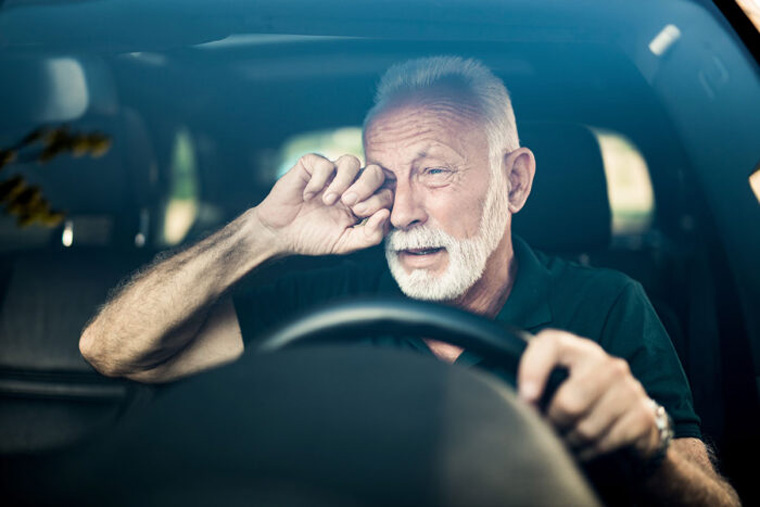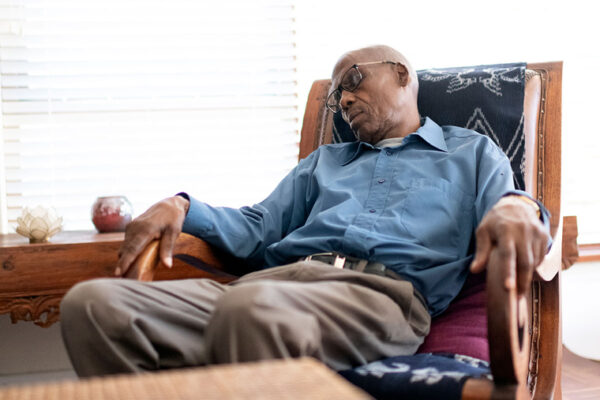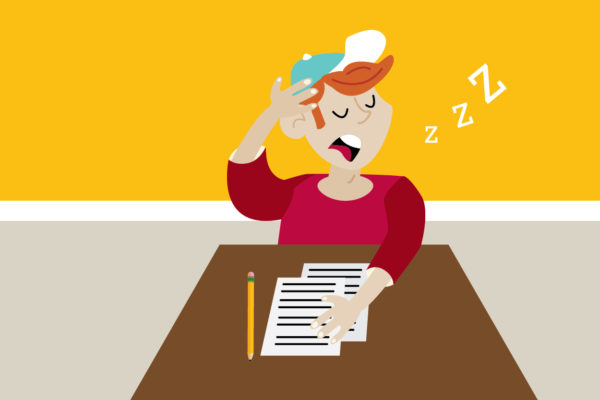People with sleep apnea wake up tired in the morning, no matter how many hours they actually sleep. The condition causes them to briefly stop and restart breathing dozens or even hundreds of times a night. Even though such breathing interruptions often don’t awaken those with apnea, they prevent them from sinking into deep, refreshing sleep.
A new study puts a number on how dangerous such chronic tiredness can be, at least in regard to driving. For every eight additional breathing interruptions per hour, the odds of making a dangerous driving move such as speeding, braking hard or accelerating suddenly increase by 27%, according to a study by researchers at Washington University School of Medicine in St. Louis.
Older adults are more likely to develop sleep apnea. They also are more likely to be seriously injured or killed in a car accident. The findings, available online in the journal Sleep, suggest that screening older adults for sleep apnea and for treatment, if needed, may help older people continue driving safely for longer.
“The percentage of older adults with mild sleep apnea is 30% to 50%, but if such adults don’t have daytime sleepiness or other evidence of impairment, they may not come to medical attention,” said co-senior author Brendan Lucey, MD, an associate professor of neurology and director of Washington University’s Sleep Medicine Center. “However, these findings suggest that we might want a lower threshold to evaluate older adults for sleep apnea and track their breathing interruptions. If their conditions worsen by just eight interruptions an hour, that could have significant adverse effects on their driving and their risk of suffering serious injury.”
People 65 and over are the most responsible drivers on the road. They obey speed limits. They drive defensively. They avoid driving at night, in bad weather and in unfamiliar places. But the changes that often come with advancing age — such as deteriorating vision, slower reflexes and, yes, difficulty sleeping — can undermine even the safest habits.
Lucey teamed up with driving researcher Ganesh M. Babulal, PhD, OTD, an assistant professor of neurology and the paper’s co-senior author, to investigate the relationship between sleep apnea and risky driving behaviors. Participants were recruited from ongoing studies at Washington University’s Charles F. and Joanne Knight Alzheimer Disease Research Center (Knight ADRC).
Babulal and Lucey monitored the driving and sleep habits of 96 older adults under real-world conditions. They used a commercially available take-home test to identify people with sleep apnea and measure its severity. Less than five breathing interruptions per hour is considered normal, five to 15 is mild sleep apnea, 15 to 30 is moderate, and greater than 30 is severe.
To assess driving habits, the researchers installed a chip developed by Babulal and colleagues into participants’ personal vehicles and monitored their driving for a year, focusing on episodes of hard braking, sudden acceleration and speeding. In total, they collected data on more than 100,000 trips. Participants also were evaluated by researchers at the Knight ADRC for cognitive impairments and molecular signs of early Alzheimer’s disease.
Even though all participants were cognitively normal, about a third had brain changes indicative of early Alzheimer’s disease. The researchers found that the frequency with which drivers made dangerous moves behind the wheel rose in parallel with the frequency with which their sleep was interrupted at night, regardless of whether their brains bore the marks of early Alzheimer’s.
“We didn’t have cameras in the vehicles, so we don’t know exactly what happened that caused someone to, say, brake hard suddenly,” Babulal said. “But it could be something like a stoplight that they didn’t realize was red until they got close and had to stomp on the brakes. The more tired you are, the less attention you have to deploy to the task at hand, especially if it is novel and constantly changing.”
The study helps untangle the ways aging-associated risk factors such as poor sleep and Alzheimer’s disease put older adults in danger while driving, and could aid efforts to find ways to maximize years of safe driving, the researchers said.
“Driving always carries the risk of crashing, and older adults are at risk of more severe injury than younger adults if they experience a crash,” Babulal said. “But we can’t just tell them to give up their keys. When older people stop driving, they lose a lot of their independence and mobility, which is often associated with negative health and social outcomes. What we want to understand is what puts them at a higher risk so we can intervene and help them stay behind the wheel, safely, for as long as possible.”
Doherty JM, Roe CM, Murphy SA, Johnson AM, Fleischer E, Toedebusch CD, Redrick T, Freund D, Morris JC, Schindler SE, Fagan AM, Holtzman DM, Lucey BP, Babulal GM. Adverse driving behaviors are associated with sleep apnea severity and age in cognitively normal older adults at risk for Alzheimer’s disease. Sleep. March 18, 2022. DOI: 10.1093/sleep/zsac070
This work was funded by the National Institutes of Health (NIH) and the National Institute on Aging, grant numbers R01AG068183, R01AG056466, R01AG067428, R01AG074302, P01AG03991, P01AG026276, P30AG066444, and K76AG054863; and the BrightFocus Foundation, grant number A2021142S.
Washington University School of Medicine’s 1,700 faculty physicians also are the medical staff of Barnes-Jewish and St. Louis Children’s hospitals. The School of Medicine is a leader in medical research, teaching and patient care, and currently is No. 4 in research funding from the National Institutes of Health (NIH). Through its affiliations with Barnes-Jewish and St. Louis Children’s hospitals, the School of Medicine is linked to BJC HealthCare.



